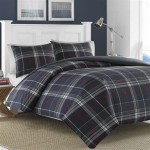What Material Is Bedding?
Bedding materials have a significant impact on our sleep quality, comfort, and health. Choosing the right material for your sheets, pillowcases, and blankets is essential to create a cozy and rejuvenating sleep environment. There are various bedding materials available, each offering unique advantages and drawbacks. This article will explore the most common bedding materials, their properties, and how to choose the best option for your needs.
Cotton
Cotton is a natural fiber known for its breathability, softness, and moisture absorption. Cotton bedding is a popular choice due to its comfort and affordability. It is suitable for all seasons, as it keeps you cool in summer and warm in winter. However, cotton can wrinkle easily and may require frequent ironing.
Linen
Linen is another natural fiber with exceptional breathability and moisture-wicking properties. It is a durable and luxurious fabric that creates a cool and crisp sleeping surface. Linen bedding is naturally antibacterial and hypoallergenic, making it an excellent choice for people with sensitive skin. However, linen can be more expensive than cotton and may require professional laundering.
Bamboo
Bamboo fabric is made from the cellulose fibers of bamboo plants. It is a sustainable and eco-friendly material that offers many of the same benefits as cotton. Bamboo bedding is soft, breathable, and moisture-wicking. It is also hypoallergenic and resistant to dust mites, making it suitable for people with allergies. Bamboo fabric can be slightly more expensive than cotton.
Silk
Silk is a luxurious natural fiber with a smooth and silky texture. Silk bedding is highly breathable and helps to regulate body temperature, keeping you cool in summer and warm in winter. It is also hypoallergenic and resistant to dust mites. However, silk is the most expensive bedding material and requires special care when laundering.
Flannel
Flannel is a soft, napped fabric made from cotton or wool. Flannel bedding is warm and cozy, making it ideal for cold winter nights. It is a good choice for people who tend to feel cold while sleeping. However, flannel can be too warm for summer use.
Choosing the Right Material
The best bedding material for you depends on your personal preferences and sleep habits. Consider the following factors when choosing a bedding material:
- Breathability: Choose materials like cotton, linen, or bamboo that allow air to circulate, keeping you cool and comfortable while you sleep.
- Moisture Absorption: Materials like cotton and linen absorb moisture effectively, which can be beneficial for people who tend to sweat at night.
- Hypoallergenic Properties: If you have sensitive skin or allergies, consider hypoallergenic materials such as linen, bamboo, or silk.
- Comfort and Feel: The texture and feel of the bedding material is important for your comfort. Consider your preference for smoothness, softness, or warmth.
- Care Requirements: Some bedding materials, such as linen and silk, may require special care when laundering. Consider the care instructions before choosing a material.
By understanding the properties of different bedding materials, you can make an informed choice and create a sleep environment that promotes comfort, relaxation, and restful sleep.
.jpg?strip=all)
The 7 Best Materials For Bed Sheets Manchester Collection

Which Bedding Material Is Best Furn Com

Advantages Of Bedding Material For Dairy Animals Engormix

What Material Are Hotel Sheets Made Of Bed

Which Bedding Material Is Best Furn Com

Choosing The Best Material For Bed Sheets A Luxurious Night S Sleep
What Is Linen A Guide To The Classic Fabric

Which Bedding Material Is Best Furn Com

Bedding Materials How To Choose The Best Mattressman
.jpg?strip=all)
Diffe Types Of Bed Sheets And How To Choose Them
Related Posts








